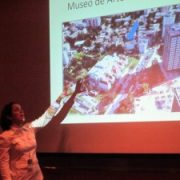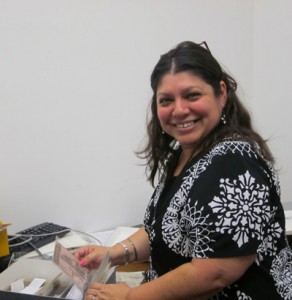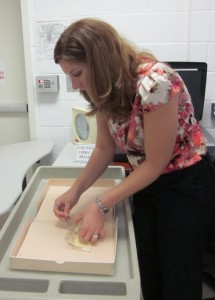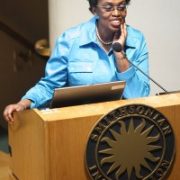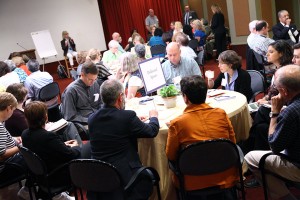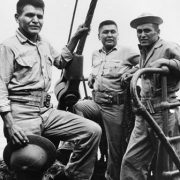Professional Development: Broadening your access to the Smithsonian
We like to say that we’re the “portal” to the Smithsonian here in the Affiliations office for all of our more than 165 Affiliate partners. And I think that is especially true for those Affiliate staff members who have taken part in our professional development programs over the years. Going behind-the-scenes to learn a new skill, conducting valuable research first-hand, or simply meeting with as many experts as possible to bring an idea to reality, and then bringing that knowledge back home to the Affiliate community is something really unique. And this collaborative feeling benefits both our Visiting Professionals and our Intern Partners who each have the opportunity to bring something new and exciting back to share with their Affiliate community.
We’re wrapping up our 2011 Intern Partnership and Visiting Professionals programs, but are accepting applications for the 2012 Visiting Professionals Program until August 31, 2011. If you have an intern you’d like to recommend for summer 2012, they’ll be able to apply online this fall–the deadline is January 20, 2012. And don’t forget, we’ve made changes to the Intern Partnership Program to reduce Affiliate costs!
But don’t take it from me- I may be a little biased. See how our Professional Development programs have benefited your fellow Affiliate colleagues and interns:
Solimar Salas– 2011 Visiting Professional from the Museo de Arte de Puerto Rico (San Juan). Working primarily with the Smithsonian’s Museum Conservation Institute (MCI) but with many other Smithsonian units as well, Solimar focused on the policies and procedures involved in developing conservation and research centers. She even was the featured presenter at MCI’s Topics in Museum Conservation lecture!

Angelica Docog poses with the Honorable Sam Johnson (R-TX), Harold Closter, and Smithsonian Secretary G. Wayne Clough after receiving her Visiting Professionals Certificate of Award.
Angelica Docog– 2011 Visiting Professional from the Charlotte Museum of History (Charlotte, NC). Angelica met with more than 30 Smithsonian experts while working on her pan-Institutional project to learn all that she could about models of accessibility at the Smithsonian. Meeting with specialists in accessible museum design, cultural interpreters, community outreach programmers, and educators, Angelica was able to develop a network of professionals that will help her create programs and exhibitions based on the Smithsonian models she observed.
Annette Fromm– 2011 Visiting Professional from the Frost Art Museum at Florida International University (Miami). Annette researched Osceola-related collections across the Smithsonian Institution as well as met with many experts regarding sensitive exhibition development/design, including outreach into the Seminole community. Annette said of her time at the Smithsonian: “A number of insightful and valuable meetings were arranged which introduced me to individuals with lengthy experience working with Native American topics.”
Marlina Reese– 2011 Intern Partner from the Women’s Museum: An Institute for the Future (Dallas, TX). Calling it her “dream internship” to intern at the Smithsonian, Marlina has been working to catalogue Confederate paper money in the Numismatics Collection at the National Museum of American History.
Annette Shumway– 2010 Intern Partner from Florida International University (Miami). Annette spent the summer of 2010 working on digitizing the Postmaster General Collection for the National Postal Museum. A roaring success story, Annette was hired by NPM to continue her work on the Postmaster General Collection!
Remember, the deadline for 2012 Visiting Professionals Program is August 31, 2011! For more information for each program and how to apply, visit the Professional Development Program page on our website.

